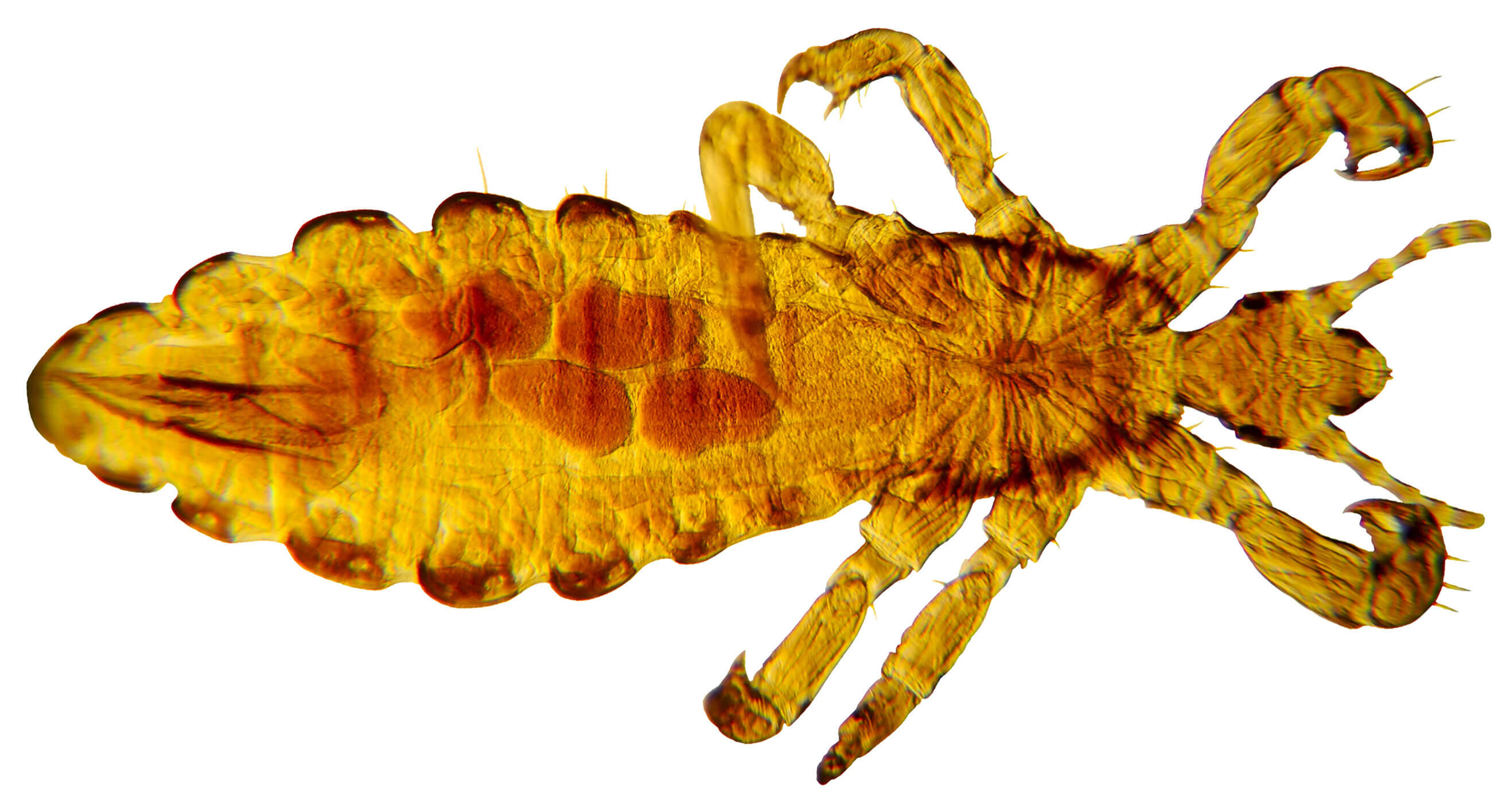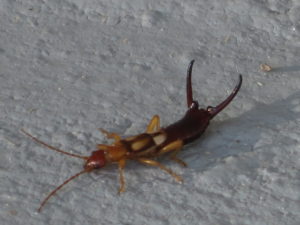Bugs on the Brain?

I was a scaredy-cat as a child. Mostly my fears centered around irrational things. To name a few: fireworks, quicksand, crows I believed were hiding under my bed, and bugs crawling into my ear and laying eggs in my brain. As I gained experience and knowledge of the world, those childhood fears began to fade. Fireworks are not bombs and are actually incredible pyrotechnical feats requiring choreography and precise calculations. I have yet to meet anyone who has encountered quicksand. And I blame Alfred Hitchcock for the crows, though I’m still not sure why I assumed they were under my bed. All fears subsided with simple logic… except one.

Master of horror Alfred Hitchcock, director of the 1963 thriller, The Birds.
Working in pest control has shown me that the idea of a bug with claws on its tail, worming into my ear and laying eggs is not an uncommon fear amongst adults. The culprit: the earwig—an elongated, black beetle creature with a set of nefarious pinchers for a tail. Its name even feeds into the rumors. Earwig. Cue shuddering.

Forficula smyrnensis, a.k.a an earwig.
But has this creature actually committed the crime? Or is this simply another childhood fear that could be explained away through logic and science? How has this common “knowledge” been so widely accepted as a basic fact? And even if this bug doesn’t wiggle its way into my brain, is it still dangerous?
As it turns out, entomologists have determined that earwigs are harmless and certainly don’t have any interest in crawling into brains. Earwigs are not venomous, and mostly use the pincers as a defense. According to an article by David Emery on Thoughtco.com, the origins of the myth date back to a Roman author, Pliny the Elder, around 77 AD in a series of books called Natural History (Naturalis Historia in Latin). In his ancient pest control suggestion, he references an earwig crawling into the ear and that spitting into said ear would cause the earwig to reemerge.

Artist’s depiction of Pliny the Elder.
Keep in mind this is over 1400 years before the sun was believed to be the center of the solar system. Britannica’s website reports that Pliny didn’t separate opinion from fact, and in 1492 Naturalis Historia was discredited by Niccolò Leoniceno after he sorted through many of the errors in the books. Some of the creatures Pliny described included humans with animal features or backwards feet, so it’s not surprising that the inaccuracy of a smaller detail about an insect’s habits wouldn’t gain a second glance while in the company of much larger fallacies.

This 1544 woodcut depicts one of the creatures described by Pliny the Elder.
But just as the rumor of Little Mikey dying after eating Pop Rocks and drinking soda spread throughout the 80s, the legend of the earwig has taken root and become regarded as a fact. References in encyclopedias and even published writings from surgeons carried the rumor on into the 1800s. Only occasionally have insects accidentally ended up inside of an ear. Other than discomfort, no real damage is done once the pest is removed.
Luckily, Moxie treats for earwigs! Just because they are harmless does not make them any less unwanted. Regular treatments will help decrease an existing population and prevent them from coming back.
Contact Moxie when you’re in need of earwig treatment, but sleep easier knowing your brain is egg free and that there are no crows under your bed.
By Lea C., Moxie
Moxie Office Expert
Sources https://www.liveabout.com/do-earwigs-crawl-in-peoples-ears-4052590 https://www.britannica.com/topic/Natural-History-encyclopedic-scientific-by-Pliny-the-Elder https://en.wikipedia.org/wiki/Pliny_the_Elder https://www.strangescience.net/pliny.htm https://www.kqed.org/science/1925887/what-do-earwigs-do-with-those-pincers-anyway https://gardenerdy.com/earwigs-bite/

